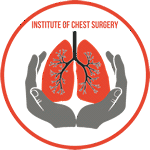Empyema is a serious medical condition characterized by the accumulation of pus within the pleural space, which is the thin fluid-filled area between the two layers of the pleura surrounding the lungs. It usually arises as a complication of a bacterial infection, such as pneumonia. Empyema requires prompt medical attention, as it can lead to severe respiratory distress and other life-threatening complications if left untreated. In this blog post, we will explore the symptoms of empyema, its causes, risk factors, and the importance of early diagnosis and treatment.
Understanding Empyema: Causes and Risk Factors
Empyema typically occurs when a bacterial infection spreads from the lungs or other nearby structures to the pleural space. The infection triggers an inflammatory response, leading to the accumulation of pus and debris in the pleural cavity. Common causes of emyema include:
- Pneumonia: Pneumonia is the most common underlying cause of emyema. Bacterial pneumonia can lead to the development of an abscess in the lung, which may subsequently rupture, allowing bacteria and pus to enter the pleural space.
- Lung Abscess: A lung abscess is a localized collection of pus within the lung tissue. If not adequately treated, the abscess can rupture, leading to emyema.
- Invasive Procedures or Trauma: Invasive medical procedures, chest injuries, or penetrating wounds can introduce bacteria directly into the pleural space, causing emyema.
- Complications of Thoracic Surgery: In rare cases, emyema may develop as a complication of thoracic surgeries, such as lung resection or chest tube insertion.
Several risk factors can increase an individual’s susceptibility to developing emyema. These include:
- Chronic lung diseases, such as chronic obstructive pulmonary disease (COPD) and bronchiectasis.
- Immunocompromised conditions, like HIV infection or undergoing immunosuppressive therapies.
- Diabetes mellitus or other underlying health conditions that weaken the immune system.
- Age, with children and older adults being at higher risk.
- Alcohol abuse or substance abuse.
Symptoms of Empyema
The symptoms of emyema can vary depending on the severity of the condition and the underlying cause. Early recognition of these symptoms is crucial for prompt diagnosis and appropriate treatment. Common signs and symptoms of emyema include:
- Fever and Chills: Emyema is often associated with a high-grade fever and chills. The body’s immune response to the infection causes an elevation in body temperature.
- Chest Pain: Patients with emyema typically experience chest pain, which may be sharp and worsen with deep breathing or coughing. The pain is a result of inflammation and irritation of the pleura.
- Persistent Cough: A persistent, productive cough is a common symptom of emyema. The cough may produce yellow or greenish sputum due to the presence of pus.
- Shortness of Breath: As pus accumulates in the pleural space, it compresses the lung tissue, leading to decreased lung expansion and shortness of breath.
- Rapid or Shallow Breathing: Patients may breathe rapidly or shallowly in an attempt to minimize chest movement and reduce pain.
- Fatigue and Weakness: The systemic infection and respiratory distress associated with emyema can lead to fatigue and weakness.
- Unintentional Weight Loss: Emyema can cause a loss of appetite and unintentional weight loss.
- Nausea and Vomiting: Some patients may experience nausea and vomiting, particularly if the infection spreads systemically.
If you or someone you know experiences any of these symptoms, it is crucial to seek immediate medical attention for a thorough evaluation and proper diagnosis.
Diagnosing Empyema
The diagnosis of emyema typically involves a combination of medical history, physical examination, and various diagnostic tests. The healthcare provider may perform the following:
- Chest X-ray: A chest X-ray can reveal the presence of fluid in the pleural space, which may appear as a shadowy opacity.
- CT Scan: A computed tomography (CT) scan provides more detailed images of the chest and can help identify the extent of the infection and its underlying cause.
- Ultrasound or Thoracentesis: An ultrasound-guided thoracentesis involves using a thin needle to remove a sample of pleural fluid for analysis. The fluid is examined for the presence of bacteria and pus, aiding in the diagnosis of emyema.
- Blood Tests: Blood tests, including complete blood count (CBC) and blood cultures, can help determine the presence of infection and the type of bacteria causing the emyema.
Treatment Options for Empyema
The treatment of emyema aims to eliminate the infection, drain the accumulated pus and fluid, and alleviate respiratory distress. The specific treatment plan depends on the severity of the condition and the underlying cause. The main treatment options include:
- Antibiotics: Antibiotics are the cornerstone of treatment for emyema caused by bacterial infections. The choice of antibiotics is based on the results of pleural fluid analysis and blood cultures to target the specific bacteria causing the infection.
- Thoracentesis or Chest Tube Insertion: Draining the infected pleural fluid is crucial to reduce pressure on the lungs and alleviate symptoms. This can be achieved through thoracentesis, where a needle is inserted into the pleural space to drain the fluid, or by inserting a chest tube for continuous drainage.
- Fibrinolytic Therapy: In some cases, the use of fibrinolytic agents may be considered to help break down the fibrin in the pleural space, promoting better drainage.
- Decortication Surgery: For cases of complicated emyema or when the infection does not resolve with medical treatment, decortication surgery may be necessary to remove the thickened pleural tissue and promote lung re-expansion.
- Pleurodesis: In recurrent cases, pleurodesis may be performed to prevent fluid re-accumulation. This procedure involves creating adhesions between the two pleural layers to fuse them together.
Conclusion
Empyema is a serious condition characterized by the accumulation of pus in the pleural space, typically resulting from a bacterial infection. Early recognition of its symptoms is crucial for timely diagnosis and appropriate treatment. If you or someone you know experiences any symptoms indicative of emyema, it is essential to seek immediate medical attention. Prompt diagnosis and a comprehensive treatment plan can help manage emyema effectively, prevent complications, and improve the chances of a successful recovery.







